- You are here:
- Home »
- Author's Archive:
All posts by Michael Saif
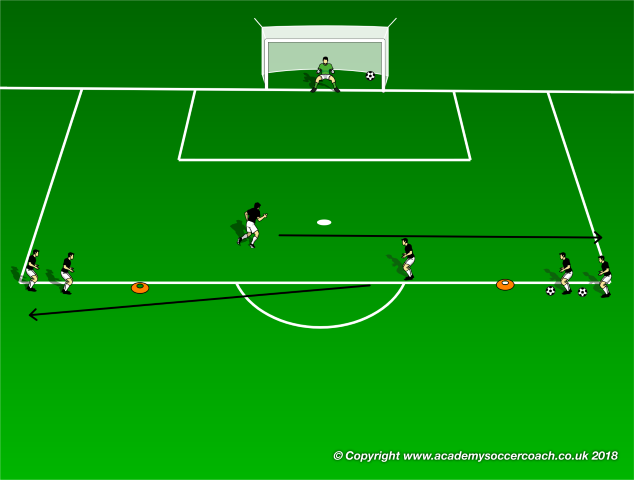
The Jermaine Jones Drill
By Matthew Carroll –
Description:
The Jermaine Jones Drill recreates the spectacular goal Jermaine Jones had in the 2014 World Cup for the US. It combines tight combination play in the box with realistic shooting opportunities from the top of the 18.
Setup:
Two lines are set up on the top of the 18, starting just wide of each 6 yard box (3 ft off). Balls are placed on one side of the line (whichever line is not shooting the ball)
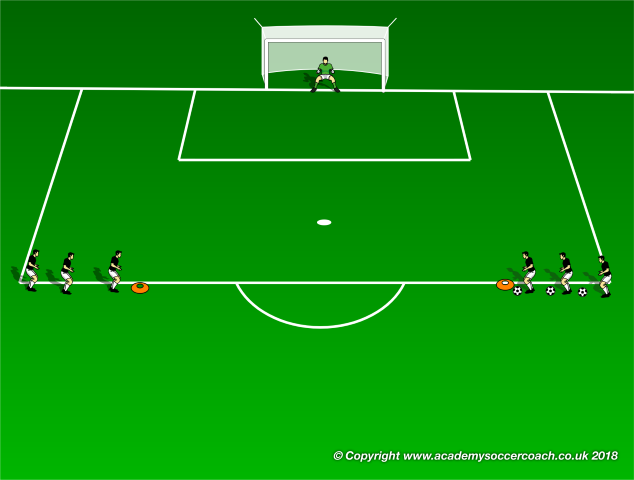
Execution:
The passing line lays off a ball to the shooting line who runs onto the ball and shoots, either first touch or with a short touch towards net. The players then jog to the back of the opposite line they came from and the next group repeats the process.
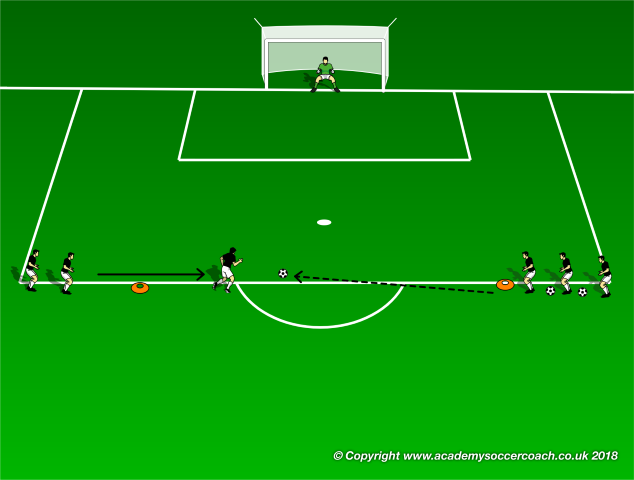
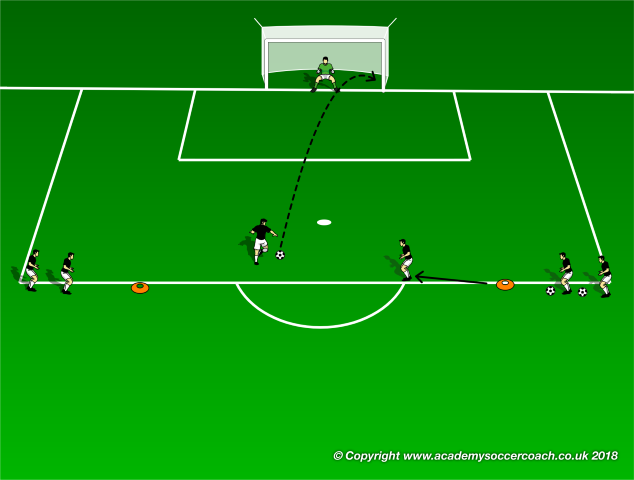

Variations:
Both lines can have balls and shooting side alternates
Passes can be played back and forth until a visual cue specifies that that particular pass will lead to a shot.
By Matthew Carroll

9 In the Middle
By Matthew Carroll –
Description:
The 9 in the Middle game is to recreate a team’s 9 (or 10) playing within the oppositions 6 5 and 4. The 9 plays as a target man who is receiving in the triangle and then redistributing to a “runner” that would be coming through to break the back line to create space for a shot or pass in the box.
Setup:
Set up a rondo with 3 defenders in the middle with one attacking player in the middle of them that group. Defenders should be set in a defensive triangle. Depending on the skill level and number of player the rondo size will vary.
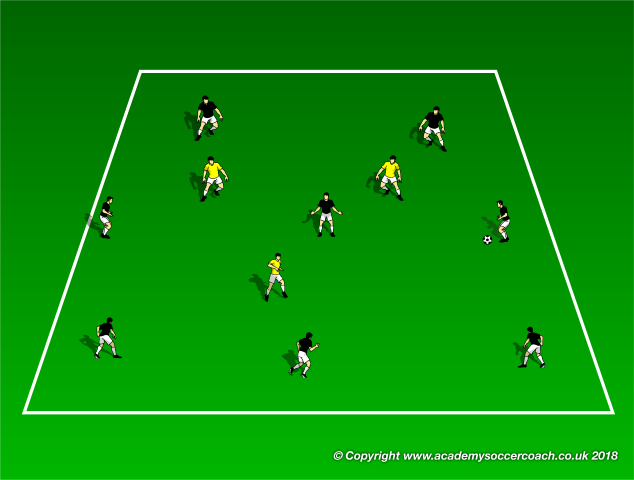
Execution:
Players on the outside attempt to play ball to the central player (the #9) who needs to then play a ball that breaks the triangle of the defending players. Balls should break one “line” between two defenders and the second pass should break a second “line” changing direction of the play.
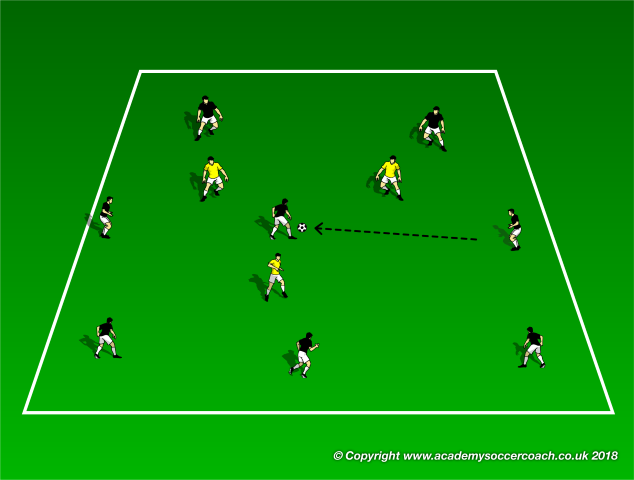
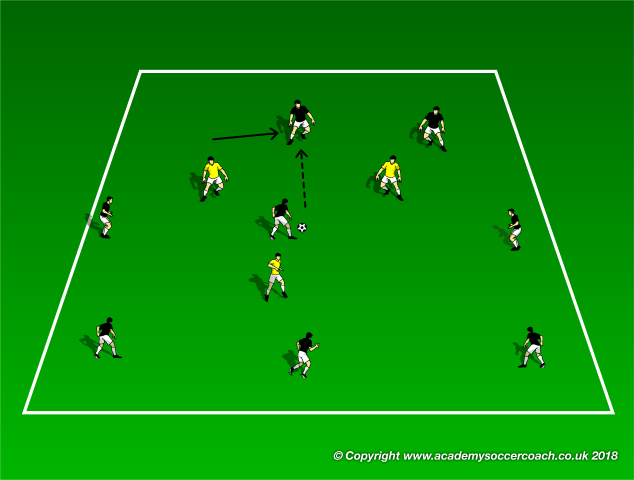
Variations:
Points can be added based on combinations of passes that break the line
Additional defenders can be added to press the outer circle
By Matthew Carroll

Juggle Circle Race
By Matthew Carroll –
Description:
The juggle circle race is a fun opening or closing activity in which players are tasked with team communication, juggling ability, and coordination challenges.
Setup:
Create 4-6 man teams Place cones starting from the top of the 18 to the halfway line. Each team circles up holding hands except for the one hand of the player with the ball. All parts of every player must be behind the 18 line.
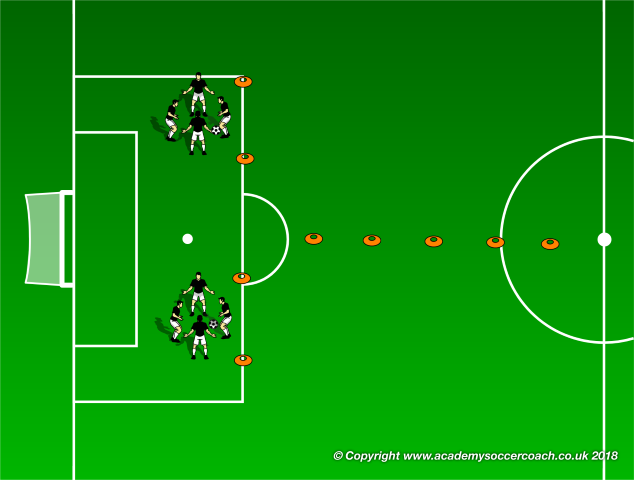
Execution:
Each team must juggle in a circle while holding hands and move from the end line to the halfway line.
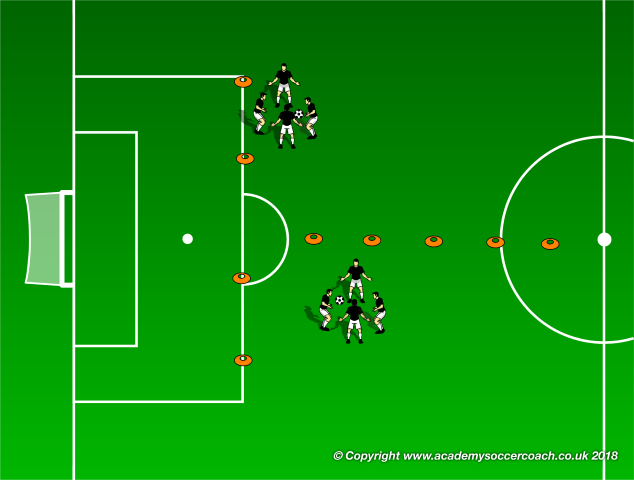
If they ball is dropped they must go back to the last cone the entire group moved past.
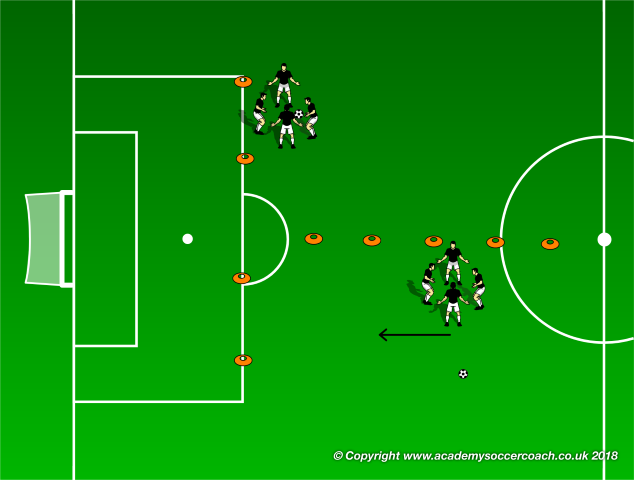
The winner is the first group to get their entire group past the halfway line
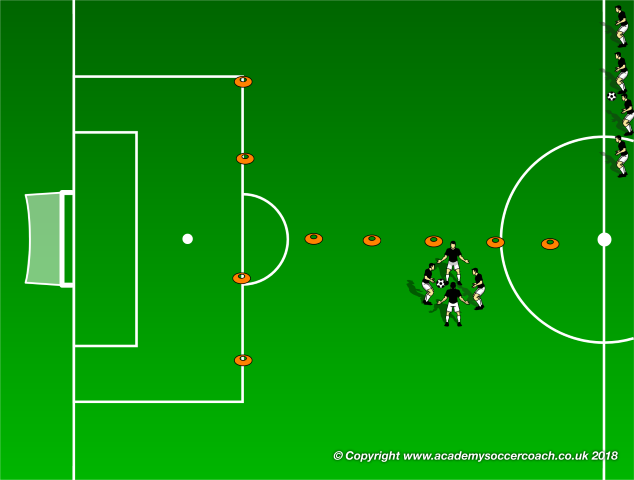
Variations:
Players can do some type of fitness activity until the ball is returned to the circle at which point the team is allowed to move forward again.
By Matthew Carroll
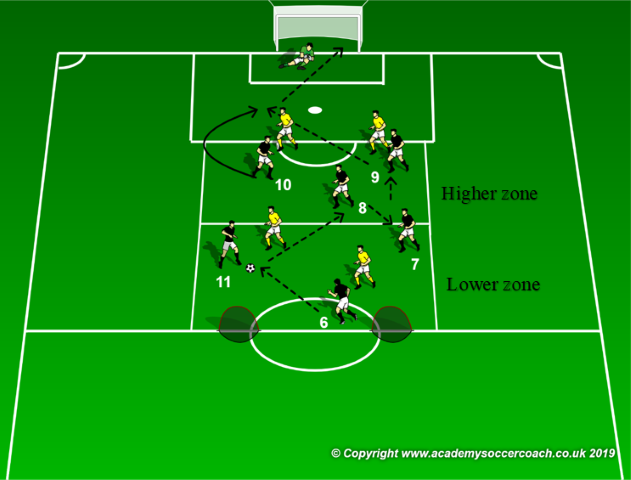
Press v Drop Game
By Matthew Carroll –
Description:
The purpose of the press v. drop game is to recreate game situations where there is an opportunity to press high up in the opponent’s half. If the the press is broken it also recreates the need to regain shape in the team’s own defensive half.
Setup:
Field is divided into three equal parts. Zone 1, Zone 2, and Zone 3. Goals and goalies are placed at either end of Zone 1 and 3. Balls should be placed into goals as all restarts come from goalkeepers.
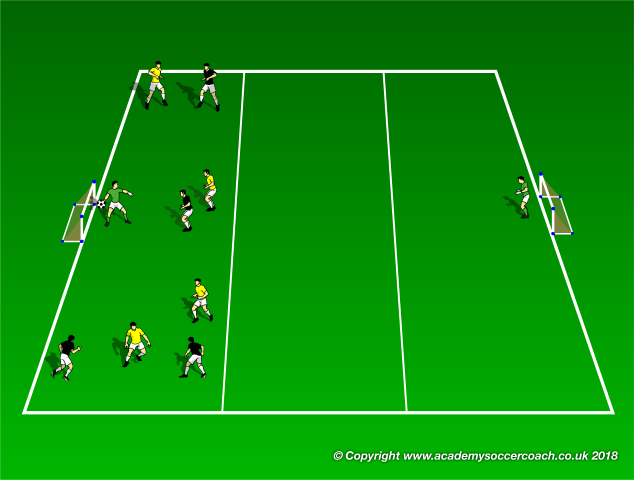
Execution:
The ball is played out from a goalie to start. If a team wins possession in their defensive third (as they do off the start) the team off the ball must press heavily.
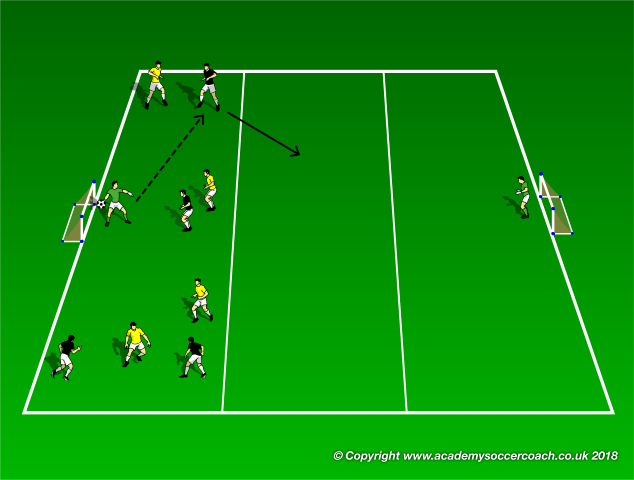
Their goal is to score off the press. If the team on the ball gets the ball into the middle zone they must complete 5 passes and the other team cannot defend them. The off the ball team must drop into their defensive third to try to set up a defensive shape.
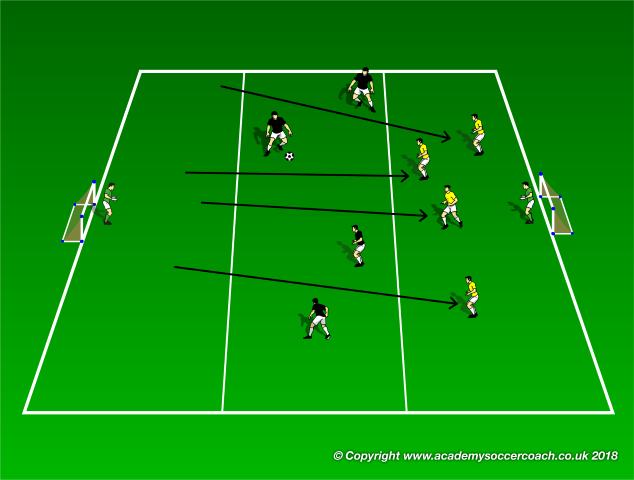
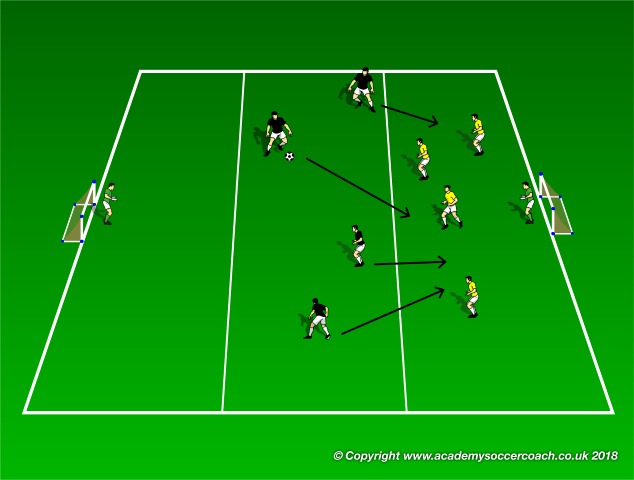
Any restart from the team in their defensive third cannot immediately go to the middle box via the goalkeeper to a player, a player must receive in zone ⅓ and then dribble it into zone 2.
Variations:
Zonal shape and challenge can vary
Throw ins and kicks can be introduced
By Matthew Carroll
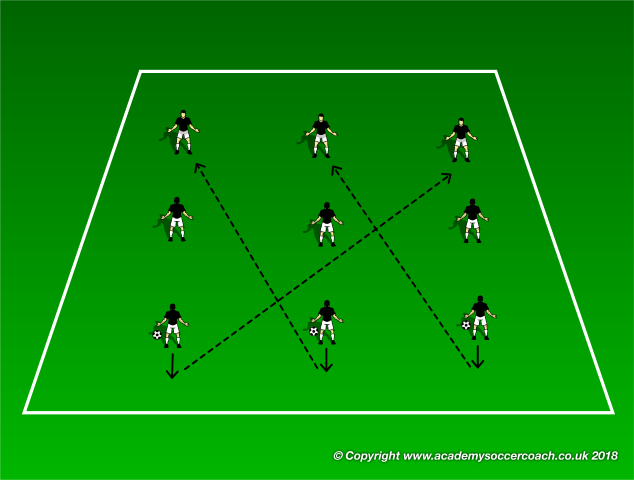
Check Your Shoulder Conveyor Belt
By Matthew Carroll –
Description:
The purpose of the CYS Conveyor Belt is to create a passing pattern that maximises touches on the ball, asks players to check their shoulders, and creates an atmosphere of awareness between players.
Setup:
9 players are set up 3 by 3 with a ball at top top of each grid.Players should be spaced about 15-20 feet from each other both ways
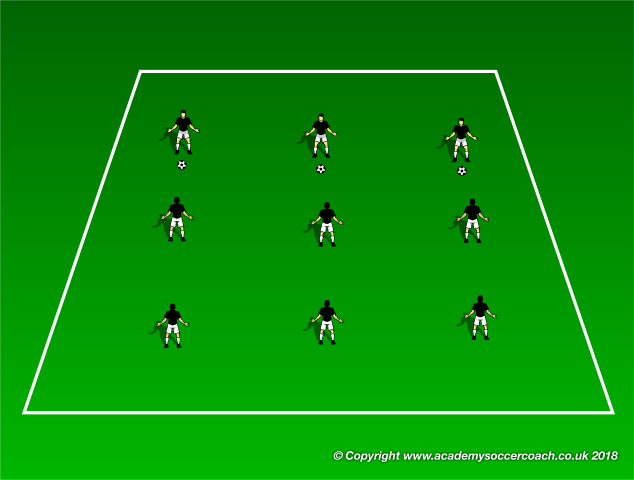
Execution:
The player at the top of the grid passes to the middle player. That middle player checks their should before the pass comes, and then again while the ball is in motion.
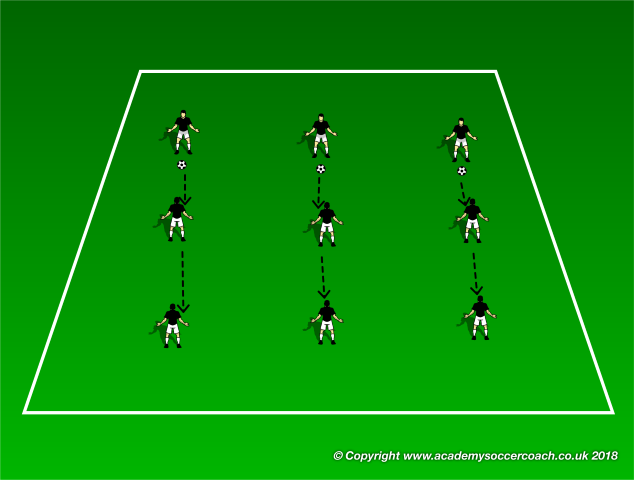
They then receive on the back foot, opening up to pass to player at the bottom of the grid who checks their shoulder twice, receives on the back foot, pulls a move to turn around, and passes to the player at the top of the next grid. The end player that receives resets by passing a lofted ball to the player at the top of the grid in the first line.
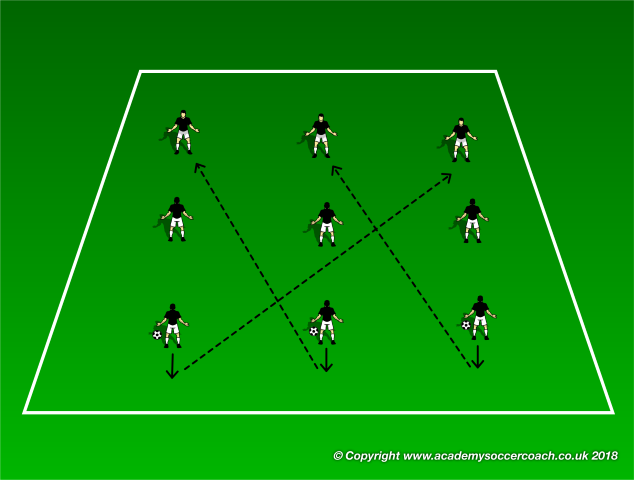
Variations:
Number of players, direction of play, amount of balls, and shape of grid can all vary.
By Matthew Carroll

The Dortmund SSG
By Matthew Carroll –
Description: The Dortmund is designed to improve the attacking players vision and response to passes and recreate patterns created in tight spaces to create shots. It should be an activation phase drill to prepare the striker to receive killer passes in the final third.
Setup:
Players (6) are placed in a rondo formation with one player in the middle. 20 feet away from the rondo at either end are two goals with/without goalies. Each player, other than the one in the middle and the goalies, has a ball.
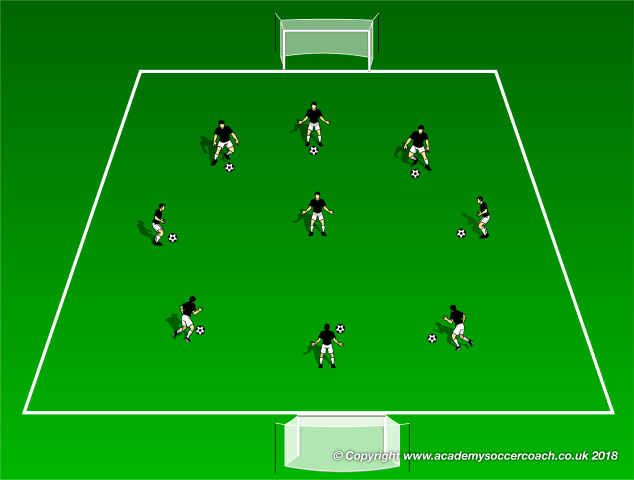
Execution: Initially, the coach yells out the name of the player passing, who then gives a difficult pass to the middle player, and a number, either one or two, which determines which goal the player in the middle should shoot on. The pass from the called player should vary from a hard pass to the feet, a lofted pass the striker needs to knock down with their head, to a driven pass at waist level.
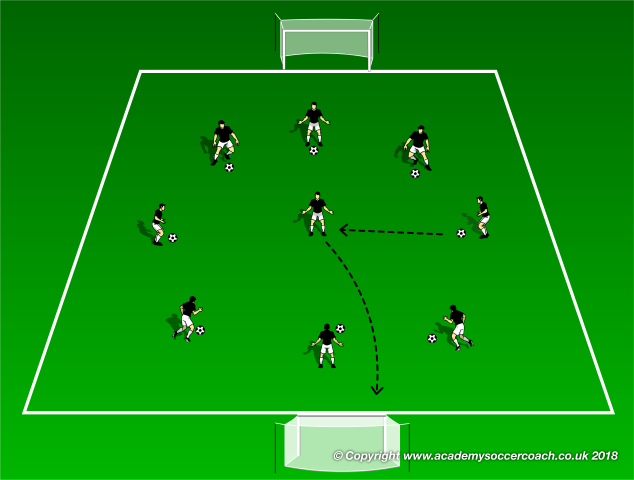
After a predetermined time the player in the middle switches with another player and the process repeats. Once every player has gone the coach can begin to call two names, the first name called passes to the player in the middle, the player in the middle passes to the second name, who then lays the ball off to the middle player for a shot on the designated goal.
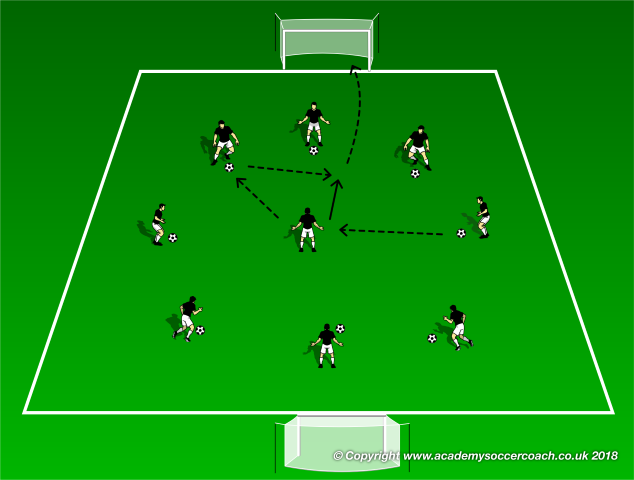
Variations:
The number of names called can vary
The player whose name is called can play a 1-2 with the middle player to set up the shot
The number and size of the goal can vary
By Matthew Carroll

Transition to Attack Drill
By Matthew Carroll
Description:
The purpose of the Transition to Attack drill is to recreate the pressure of defending in a team’s own final third and creating lighting quick counter attacks from this position using support play from the 9 and 10.
Setup:
The 10×54 yd field is split into three phases. 5 black players are placed as defenders representing the back line, the 6, and the 8. 4 yellow players are placed as attackers representing the 9s, 10, and 7/11. A red 10 is placed in the 2nd phase, and another red 9 is placed in phase 3. Balls are played in by the coach to attacking team at the edge of phase 1 and 2.
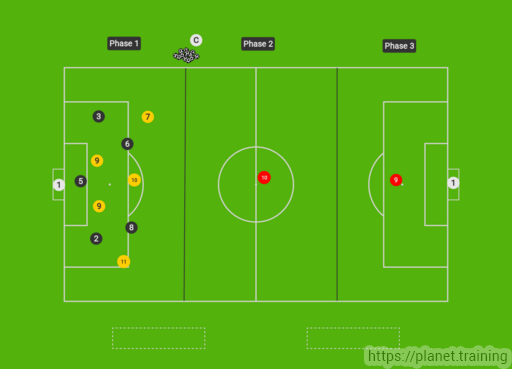
Execution:
Ball is initially played into the yellow team, who attempts to score goals against the black team. The black team then attempts to win the ball and play to the red player in phase 2.
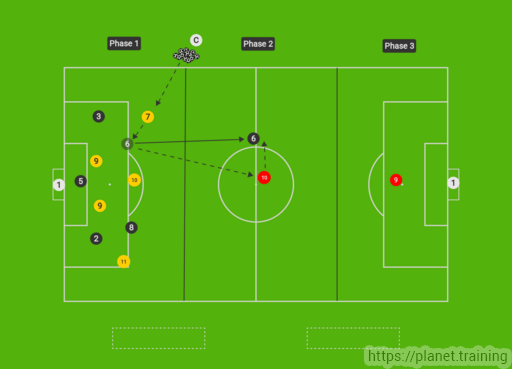
Once they have played a pass to the red player they can then move onto phase 3 where they must play a pass to the green 9. Regular out of bounds rules are applied, every restart after a goal comes from the coaches
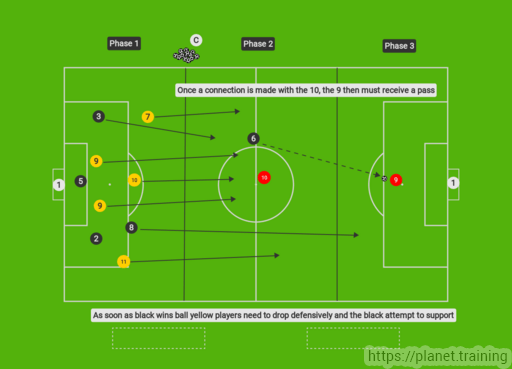
Variations:
Defenders can be added to oppose the red team
The middle line can be bypassed.
By Matthew Carroll

Killer Pass Game
By Matthew Carroll
Description:
The Killer Pass Game is used to enhance a player’s ability to utilize pockets of space between lines to create scoring opportunities. In addition to this the passing players must be creative and find a rapport with the receiving players. Defenders must work as a unit, and the tight space of the drill bring in a conditioning element.
Setup:
Create a grid as wide as the 18 and 5 yards out from it. Place all balls beyond the grid. Split the 18 with a single cone. Place two “Sweepers” in the two 18 grids. Place one “10” with the balls. Take every other player and split them evenly into attackers and defenders within the grid.
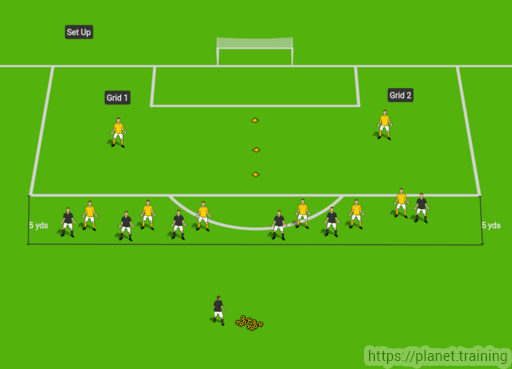
Execution:
The passer must play a ball either to one of the attackers or into the 18 for the attackers to run onto.
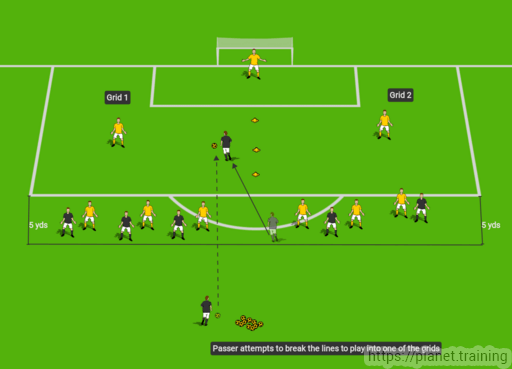
The defenders must try to stop the attacker from receiving a ball but cannot enter the 18. Once the ball is into the grid the sweepers (who must stay in their grid) must defend the attacker.
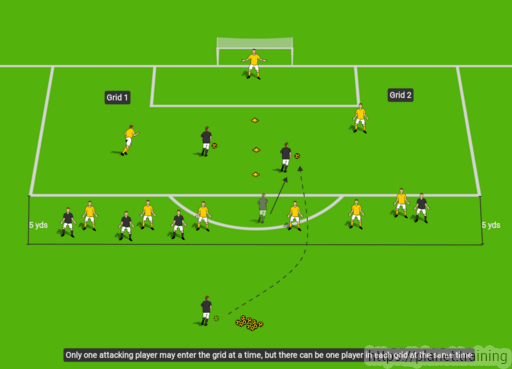
If the attacker scores he then becomes an additional passer, if he does not score he must go back into the grid outside the 18. Only one ball can be in each 18 grid at a time (so two attackers can technically be in the 18 at the same time).
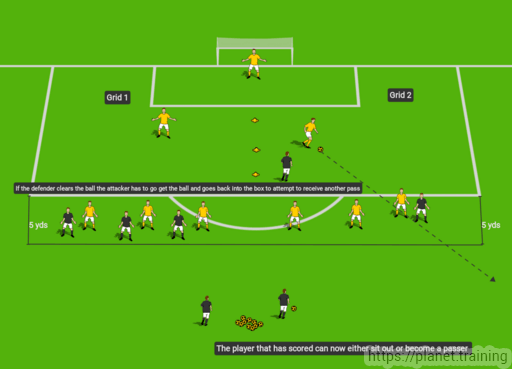
Variations:
The numbers of the attackers and defenders can vary, as well as sweepers and passers.
Players that score can be removed, or rotate in for the passer
By Matthew Carroll
